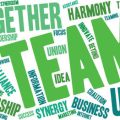1. Understanding Unconscious Bias in the American Workplace
Unconscious bias, sometimes called implicit bias, refers to the automatic judgments and stereotypes we form about people without realizing it. These biases are shaped by our background, experiences, and cultural environment. In the United States, where workplaces are diverse and multicultural, understanding unconscious bias is especially important for ethical leadership and inclusive team dynamics.
What Is Unconscious Bias?
Unconscious bias happens when our brains make quick assessments of people or situations based on limited information. These snap judgments can influence decisions and interactions at work, even if we believe we are being fair and objective. Because these biases operate below our conscious awareness, they can be hard to detect in ourselves.
Where Does It Come From?
Our brains use shortcuts—called heuristics—to process the huge amount of information we encounter each day. While these shortcuts help us make fast decisions, they can also reinforce stereotypes and lead us to overlook individual differences. Family upbringing, media exposure, education, and workplace culture all play a role in shaping our unconscious beliefs.
Common Types of Unconscious Bias in U.S. Workplaces
| Type of Bias | Description | Example in the U.S. Workplace |
|---|---|---|
| Affinity Bias | Favoring people who are like ourselves | Preferring to hire alumni from your own college or people with similar hobbies |
| Gender Bias | Assumptions based on gender roles or expectations | Assigning administrative tasks more often to women regardless of their role |
| Racial/Ethnic Bias | Stereotyping based on race or ethnicity | Assuming a person’s communication style or skills based on their background |
| Age Bias | Judging someone’s abilities based on age | Believing younger employees are more tech-savvy or older workers resist change |
| Name Bias | Basing assumptions on how someone’s name sounds | Favoring resumes with familiar-sounding names over unique or ethnic ones |
The Impact on Workplace Culture
When left unaddressed, unconscious bias can affect hiring, promotions, team collaboration, and employee morale. In the American context—where companies emphasize diversity, equity, and inclusion—leaders must recognize how bias shapes daily interactions and business outcomes. Being aware of these hidden influences is the first step toward creating a fairer workplace for everyone.
2. Recognizing Your Own Biases
Understanding What Unconscious Bias Looks Like
Unconscious bias is a natural part of how our brains process information, but it can lead to unfair decisions in the workplace. As leaders, it’s important to recognize that everyone has biases—even if we don’t notice them at first. Understanding your own biases is the first step toward ethical leadership.
Practical Strategies for Self-Reflection
Here are some practical steps you can take to start identifying and reflecting on your personal biases:
- Pause and Reflect: Before making a decision about hiring, promotions, or team assignments, pause and ask yourself why you’re leaning one way or another. Is it based on facts or feelings?
- Seek Feedback: Ask trusted colleagues for honest feedback about your behavior and decisions. Sometimes others see patterns we don’t notice ourselves.
- Use Self-Assessment Tools: Try online tools like Harvard’s Implicit Association Test (IAT) to uncover hidden preferences related to race, gender, age, and more.
- Keep a Decision Journal: Write down the reasons behind key decisions. Over time, look for trends—are certain groups favored? Are similar mistakes repeated?
Examples of Common Unconscious Biases in Leadership
| Type of Bias | Description | Workplace Example |
|---|---|---|
| Affinity Bias | Preferring people who are similar to ourselves | A manager consistently assigns high-profile projects to team members who share their background or interests |
| Confirmation Bias | Seeking information that supports existing beliefs | A leader overlooks evidence that a new team member is excelling because they expected slower progress from a recent hire |
| Halo Effect | Letting one positive trait influence overall perception | An employee who’s great at presentations is assumed to be strong in all areas, even unrelated tasks |
| Stereotyping | Attributing specific characteristics to all members of a group | A supervisor assumes younger employees are more tech-savvy without checking actual skills |
Self-Assessment Questions for Leaders
If you’re not sure where to start, ask yourself these questions regularly:
- Do I give more opportunities to certain types of people? Why?
- Have I ever overlooked someone’s ideas or input because of my assumptions?
- Am I open to feedback about my decisions—even if it’s uncomfortable?
- How diverse is my inner circle at work? Do I actively seek out different perspectives?
Tip: Make It a Habit
The key is consistency. Regular self-reflection helps you catch biases early and make more fair, ethical decisions as a leader.

3. Creating Inclusive Teams
Building inclusive teams is essential for ethical leadership and for navigating unconscious bias effectively. In the U.S., diversity in the workplace is highly valued, not just as a moral imperative but also as a business advantage. Leaders play a key role in shaping team culture by ensuring fair hiring, promotion, and team dynamics that reflect American values of equality and respect.
Fair Hiring Practices
To reduce bias during recruitment, organizations can use structured interviews and standardized evaluation criteria. This helps ensure every candidate gets an equal opportunity based on their skills and qualifications, not on personal characteristics or background. Consider using diverse hiring panels to bring multiple perspectives into the decision-making process.
| Traditional Hiring | Inclusive Hiring |
|---|---|
| Unstructured interviews Hiring based on “gut feeling” Narrow job postings |
Standardized interview questions Diverse hiring panels Broad outreach to underrepresented groups |
Promotion and Advancement
Promotions should be transparent and based on clear performance metrics. Regularly review promotion data to identify patterns that could indicate unconscious bias. Provide mentorship programs to support employees from diverse backgrounds so everyone has equal access to growth opportunities.
Tips for Fair Promotion:
- Set clear criteria for advancement.
- Offer training on recognizing bias in evaluations.
- Create sponsorship programs to advocate for diverse talent.
Fostering Inclusive Team Dynamics
An inclusive team environment means everyone feels safe to share ideas and contribute. Encourage open communication, active listening, and respectful feedback. Celebrate cultural differences by recognizing holidays and traditions important to team members. Address microaggressions promptly and create channels for employees to voice concerns without fear of retaliation.
Checklist for Inclusive Team Culture:
- Regularly discuss inclusion in team meetings.
- Provide diversity and sensitivity training.
- Use anonymous surveys to gather honest feedback about team climate.
- Acknowledge achievements from all team members equally.
By embedding these practices into daily routines, leaders help build stronger, more resilient teams where everyone can thrive, reflecting the American ideal of diversity as strength.
4. Ethical Decision-Making and Bias Interruption
Recognizing Bias in Everyday Leadership Decisions
Unconscious bias can show up in many leadership situations, often without us realizing it. Whether you’re making a hiring decision, leading a team meeting, or handling conflict, these biases can influence the choices you make. By learning to spot them, leaders can take steps to ensure their decisions are both fair and ethical.
Practical Tools for Interrupting Bias
Here are some simple yet effective tools and frameworks leaders can use to interrupt unconscious bias during key processes:
1. Leadership Decision-Making
| Tool/Framework | How It Helps | Example Application |
|---|---|---|
| Pause-and-Reflect Questions | Encourages leaders to slow down and check assumptions before deciding. | Ask: “Am I favoring someone because they remind me of myself?” before promoting an employee. |
| Diverse Decision Teams | Involves people from different backgrounds to provide input. | Include team members with varied perspectives when selecting a new project leader. |
| Checklist Approach | Keeps decisions consistent and focused on objective criteria. | Use a standardized checklist when evaluating candidates for a role. |
2. Performance Reviews
| Tool/Framework | How It Helps | Example Application |
|---|---|---|
| Structured Feedback Forms | Reduces subjectivity by using the same questions for everyone. | Rate all employees based on specific, agreed-upon goals and skills. |
| Calibration Meetings | Makes sure evaluations are fair across teams or departments. | Managers review each other’s assessments to find inconsistencies or patterns of bias. |
| Self-Assessment Inclusion | Puts employees’ own voices into the process, balancing manager perspective. | Add a self-reflection section to annual reviews so employees can share their achievements. |
3. Conflict Resolution
| Tool/Framework | How It Helps | Example Application |
|---|---|---|
| Acknowledgment Statements | Makes room for different viewpoints by recognizing emotions and experiences. | Saying: “I understand this issue feels different for each of you.” at the start of mediation. |
| Mediation Guidelines | Keeps discussions respectful and focused on solutions, not personal judgments. | Create ground rules that prevent interrupting or dismissing others’ contributions. |
| Bystander Intervention Training | Empowers team members to call out bias respectfully in real time. | If someone makes an unfair comment, trained staff know how to address it right away without escalating conflict. |
Cultivating an Ongoing Practice of Self-Awareness
The most ethical leaders make a habit of checking themselves for bias regularly. By integrating these tools into daily routines—whether during big decisions or everyday interactions—you create a workplace where fairness isn’t just an ideal but a shared reality. This continuous practice helps everyone grow as individuals and as a team, building trust and setting a strong example for others to follow.
5. Building a Culture of Accountability
Why Accountability Matters in Addressing Unconscious Bias
Creating an inclusive and ethical workplace requires more than just awareness of unconscious bias—it demands action and accountability. When leaders prioritize accountability, they send a clear message: everyone is responsible for building a fair and respectful environment. This not only helps reduce bias but also empowers teams to act ethically every day.
Steps for Leaders to Foster Accountability
| Step | Description | Practical Example |
|---|---|---|
| 1. Set Clear Expectations | Define what ethical behavior looks like and communicate it to your team. | Create a code of conduct that includes anti-bias guidelines. |
| 2. Provide Regular Training | Offer ongoing education about unconscious bias and its impact. | Host quarterly workshops with real-world scenarios. |
| 3. Encourage Open Conversations | Create safe spaces for employees to discuss concerns without fear of retaliation. | Hold monthly team meetings focused on inclusion topics. |
| 4. Use Fair Feedback Systems | Implement unbiased performance reviews and feedback loops. | Use structured evaluation forms that minimize subjective judgments. |
| 5. Recognize and Reward Positive Behavior | Acknowledge individuals who actively contribute to a bias-free workplace. | Give shout-outs or small rewards during team meetings. |
| 6. Respond Promptly to Issues | Take immediate action when bias is identified or reported. | Have a transparent process for investigating complaints. |
The Role of Leaders in Sustaining Ethical Practices
Your team will look to you for cues on what behaviors are valued. By modeling self-awareness, humility, and commitment to learning, you set the tone for the entire organization. Remember, accountability isn’t about punishment—it’s about growth, trust, and shared responsibility.
Tips for Everyday Leadership Habits
- Check Your Own Biases: Take time each week to reflect on your decisions and interactions.
- Create Reminders: Post visual reminders or prompts around the office about your core values and anti-bias commitments.
- Invite Feedback: Ask your team how you can improve in supporting fairness and inclusion.
- Stay Consistent: Apply policies equally to all employees, no matter their role or background.
Troubleshooting Common Challenges
- If people resist new habits, explain the “why” behind these changes—link them back to company values and personal growth opportunities.
- If mistakes happen, use them as teaching moments rather than assigning blame. Focus on solutions together as a team.
- If progress feels slow, celebrate small wins to keep momentum going and show that change is possible over time.


